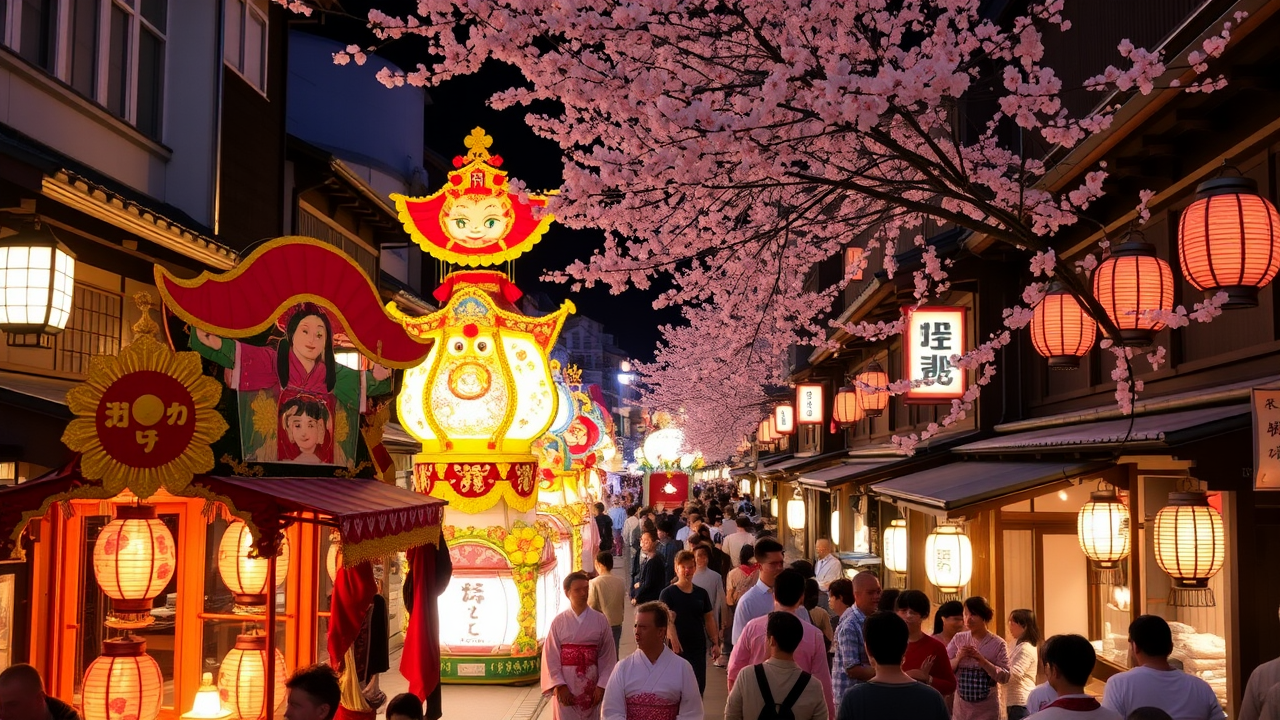Experiencing the Cultural Festivals of Kyoto
Kyoto, Japan, stands as a beacon of traditional Japanese culture, history, and spirituality. Known for its meticulously preserved temples, shrines, and festivals, Kyoto offers visitors a unique chance to step back in time and immerse themselves in age-old customs. If you are planning a trip to Japan, understanding what makes Kyoto a special cultural hub can enrich your experience and create memories that last a lifetime.
One of the most iconic events in Kyoto is the Gion Matsuri, a festival that dates back over a thousand years to the 9th century. Held every July, Gion Matsuri captures the essence of Japanese festivals with its grand parades, traditional music, and elaborate costumes. During this period, the city transforms into a vibrant celebration of Kyoto’s rich heritage. The streets are lined with floats called yamaboko, which are beautifully decorated and often centuries old. These floats are pulled through the city accompanied by traditional drum beats and chants, creating an energetic atmosphere.
Participating in or witnessing the Gion Matsuri provides an authentic glimpse into Japan’s festival culture. Visitors often stroll through the historic districts of Gion and Higashiyama, where narrow alleyways and wooden machiya houses frame the festival scene. The excitement continues with nighttime processions, where the floats are illuminated, casting a magical glow over the streets.
Apart from Gion Matsuri, Kyoto hosts a variety of other traditional festivals throughout the year, each with its unique customs and history. The Aoi Matsuri in May features ceremonial processions dressed in Heian period costumes, running from the Kyoto Imperial Palace to the Kamo Shrines. In May, the Jidai Matsuri (Festival of the Ages) dramatically showcases Kyoto’s evolution with a parade of historic costumes representing different eras.
Spring is perhaps the most enchanting time to visit Kyoto, thanks to the cherry blossom season. From late March to early April, the city is blanketed in pink and white blossoms. Strolling beneath cherry trees in full bloom at locations like Maruyama Park, the Philosopher’s Path, and around Kyoto’s ancient temples is a deeply memorable experience. Many festivals and outdoor tea ceremonies coincide with this season, allowing visitors to enjoy traditional performances amid the delicate beauty of sakura blossoms.
Kyoto’s historic temples and shrines are also focal points during these festivals. The iconic Kiyomizu-dera Temple, with its wooden stage overlooking cherry blossoms, is a prime spot for both sightseeing and capturing stunning photographs. Fushimi Inari Taisha, famous for its thousands of red torii gates, hosts festivals that showcase Shinto rituals and traditional music.
Traditional music and dance are integral to these celebrations. During festivals, performances of Gagaku (ancient court music), taiko drumming, and shamisen tunes fill the air. Many temples and shrines hold nightly performances that visitors can enjoy as they explore the festival grounds.
Costumes play a significant role in Japanese festivals, especially in Kyoto. Participants often wear kimono and yukata, beautifully decorated with seasonal motifs. Visitors, too, have the opportunity to rent traditional attire, allowing for more immersive photos and interactions with locals. Wearing a kimono or yukata enhances the experience, turning a sightseeing day into a cultural adventure.
Travel tips for enjoying Kyoto’s festivals include arriving early in the day to avoid crowds, wearing comfortable footwear, and bringing a camera for capturing the vibrant scenes. Many festivals are family-friendly and open to international travelers. To truly experience the culture, consider joining guided tours that explain the history and significance behind each event.
In summary, Kyoto’s festivals are a wonderful way to engage with Japanese traditions, history, and community spirit. From the grandeur of Gion Matsuri to the peaceful beauty of cherry blossom viewing, the city offers a diverse tapestry of cultural experiences. Whether you are interested in historical processions, traditional music, or simply soaking in the festive atmosphere, Kyoto’s festivals provide an inspiring journey into Japan’s cultural soul.
Plan your visit around these festivals and discover why Kyoto remains a cherished center of Japanese traditions. The memories of colorful floats, serene temples, and springtime blossoms will stay with you long after your trip ends. Experience the magic of Kyoto’s festivals and take a piece of its timeless culture back home with you.

Leave a Reply